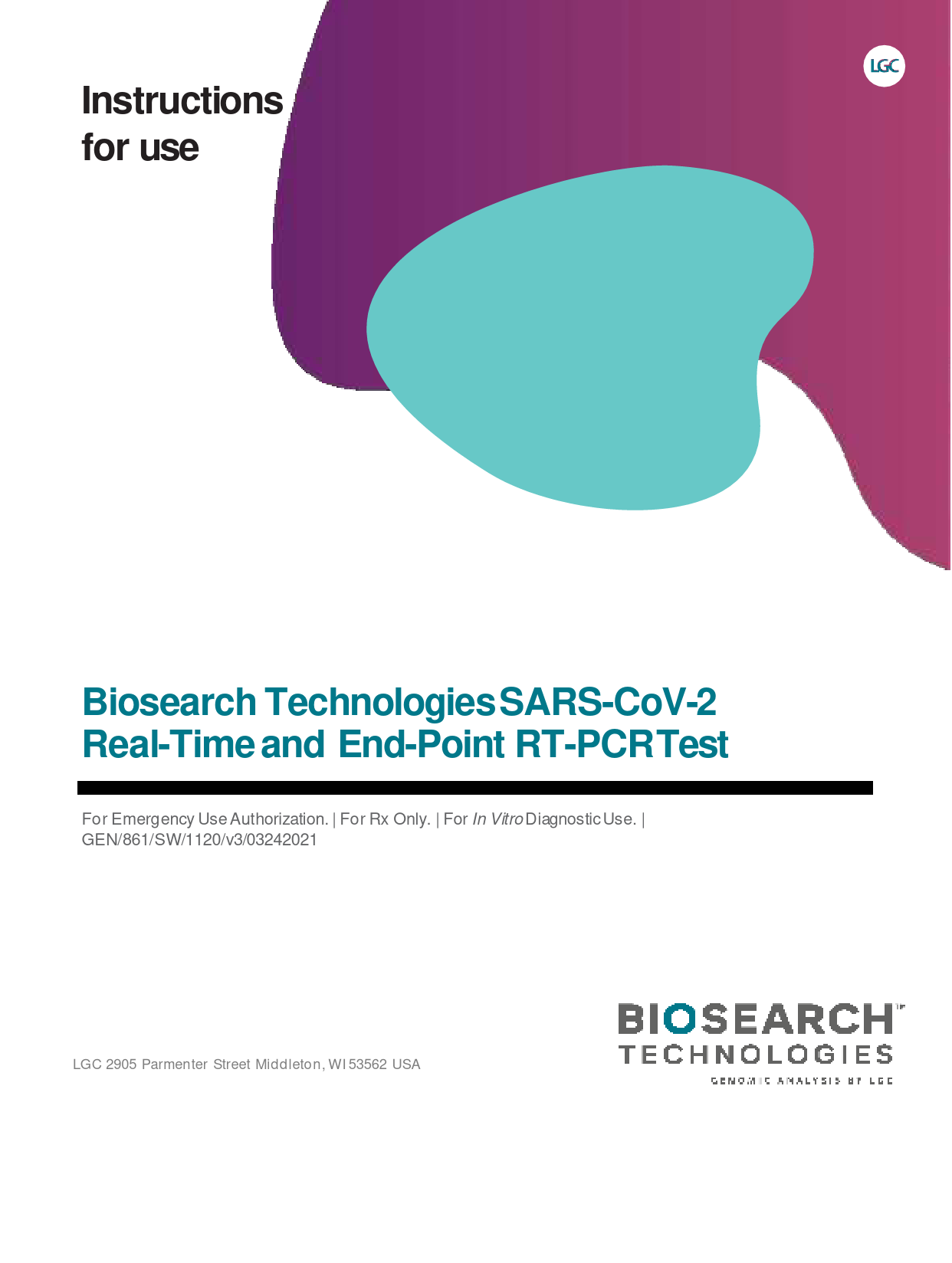
Biosearch Technologies SARS-CoV-2 RT-PCR Test
Overview
This document provides detailed instructions for the Biosearch Technologies SARS-CoV-2 Real-Time and End-Point RT-PCR Test. Developed by LGC, this in vitro diagnostic test is designed for the qualitative detection of SARS-CoV-2 RNA.
Intended Use & Authorization
The test is intended for use by qualified laboratory personnel in certified high-complexity laboratories. It is authorized under the U.S. Food and Drug Administration's (FDA) Emergency Use Authorization (EUA) for the detection of nucleic acid from SARS-CoV-2.
Key Features
- Qualitative detection of SARS-CoV-2 RNA from upper respiratory specimens.
- Supports both real-time and end-point RT-PCR workflows.
- Utilizes advanced nucleic acid amplification technology.
- Requires specific instrumentation and reagents manufactured by Biosearch Technologies and other suppliers.
Important Information
Adherence to good laboratory practices, biosafety guidelines, and the instructions provided is crucial for accurate results. For detailed procedures, warnings, and performance evaluations, please refer to the full document.
For more information on biosafety guidelines, refer to the CDC's Biosafety in Microbiological and Biomedical Laboratories (BMBL) and Interim Laboratory Biosafety Guidelines for Handling and Processing Specimens Associated with SARS-CoV-2.
Models: Biosearch Technologies SARS-CoV-2 Real-Time and End-Point RT-PCRTest